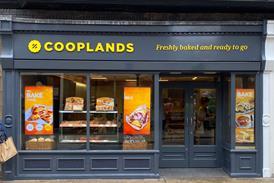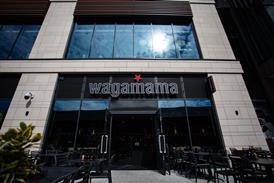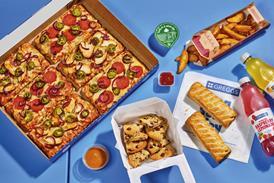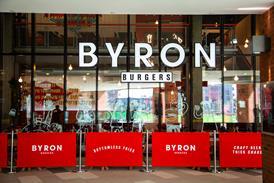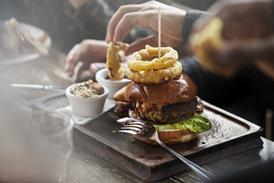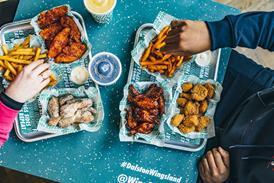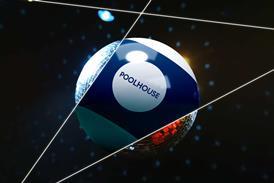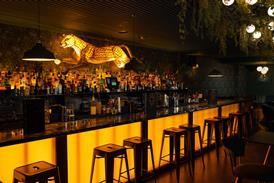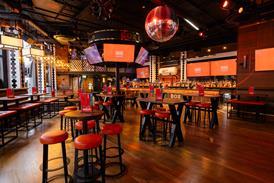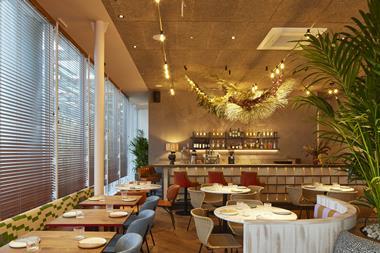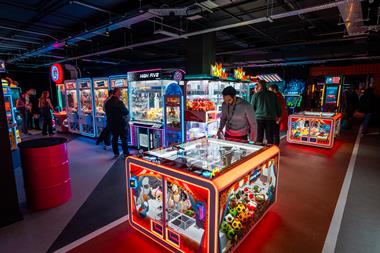New ways to “measure the unmeasurable” mean that satisfaction data could start to rival sales data as a key metric for operators, according to Gary Goodman, chief executive of Yumpingo.
Working in the field of Big Data within the restaurant industry, I often get asked “What is the key ‘metric of truth’ for restaurants?” The implication being that there needs to be one focus to make sure we stay at the top of our game if we’re to transform our business from good to great. In our sector, the most common answer is to focus on sales (revenue and same-store) because, well, sales answer all problems. That may be applicable in the short term, but the truth lies elsewhere if we’re to move beyond the shorter sights of our business. There is a better measure of success.
Sales are clearly important, but only give operators and restaurateurs a “rear-view mirror” of what’s just happened. It’s simply a metric of past behaviour. I’d argue that when it comes to moving your business, customer sentiment is the big-hitter so that operators can gauge not just how well they’ve been doing but how well they’re likely to perform. Our problem is that quantifying guest satisfaction has been elusive with few data points captured after the fact and without much insight, but that is changing. Technology is delivering ways to measure the unmeasurable.
Sales vs. traffic
In a competitive market environment, driving traffic via happier customers returning and promoting should contribute to higher sales. That’s the vision of a better future. What we’re seeing though are increased sales being driven by higher prices where the burden of price – whether by item or by add-ons – is consistently shouldered by the consumer, which we know is exacerbating customer attrition.
We have taken the tack of raising the cost of dishes or increased spend per head to compensate for margin compression and rising labour costs, somewhat perceived as a necessary evil but with likely long-term damage. It’s time to change our strategy and chase repeat traffic because we’ve already secured the consumer consideration, which is a hurdle in itself.
Finding the line of sight
Customer satisfaction is more complex than simple sales metrics because it is based on a variety of qualitative rather than quantitative factors connected to emotions, which are hard to score or rate in a meaningful way.
The way to find the answer is by measuring a wide variety of very specific factors across large volumes of customers. A successful restaurant has potentially 1,000 points of failure but often, no line of sight on where problems are occurring - or areas of success, for that matter. By measuring multiple proof points from thousands of guest reviews connected to dish (e.g. taste, value), server (e.g. friendly, knowledgeable, responsive), and overall experience (e.g. speed, quality) plus personal attitudes (have they been before, likelihood of returning), it is possible to build up an accurate picture of guest satisfaction and brand promotion.
Similar concepts have already gained traction in other sectors – one of the most notable being Glassdoor, the platform which enables employees to rate and review companies around the world. The original idea was to help job hunters make informed decisions but there have been broader implications for corporate branding and reputation.
Like Glassdoor, aggregating high volumes of diverse granular data and turning it into meaningful insights requires a sophisticated digital platform and machine learning functionality. It’s beyond the capabilities of “analogue” approaches like (in our industry) deploying Mystery Diner checks or trawling TripAdvisor reviews, which is why FoodTech has now entered the lexicon, alongside other industry short-hands like FinTech, PropTech and LawTech.
Nudge, nudge
This kind of enhanced visibility makes it possible to embrace “continuous improvement” through a number of small nudges and re-calibrations to an offering – something I’d argue resonates in the restaurant industry more than almost any other business. If multiple customers say the steak needs more seasoning, that’s a manageable change for the kitchen. If multiple customers feel their welcome wasn’t warm enough, that’s a manageable training or staffing response. If guests are loving the poke, that’s a manageable up-sell to get that “winner” into the mouths of more guests. If a vegetarian item has a high passion score, that’s a manageable product development strategy to consider more veggie choice. The opportunities are endless.
In turn, this 360-degree perspective helps everyone involved in the success of a restaurant to speak the same language and work together to drive improvement. That means our guests, servers, GMs, kitchen teams, menu development, ops and marketing teams and owners are all connected towards one cause of driving happiness as a shared success.
Transformative power
Ultimately, revealing all this deep and detailed knowledge plays a crucial role in supporting business development, from continuous incremental improvement all the way up to major transformation programmes. How then do we do this? The answer is technology that’s on the side of the guest. It’s time to connect consumers digitally within our four walls rather than wait for them to post their sentiments to a review aggregate site where some third party then benefits from customers’ perceptions of our brands. We can control the flow of data by connecting to our guests digitally in-restaurant, be that through digital check presenters, geofencing, or live receipts. The trick is creating that conversation before a customer leaves our venue so that their perceptions are linked directly to product, person, and place in real time.
Operators will be looking for rapid return on investment (ROI) from platforms that hit the ground running, with a proven methodology and turn-key functionality: minimal training and IT support required, just a wi-fi connection. This is not the future for restaurants – it’s the present with major brands such as TGI Fridays, Wagamama and Wahaca, as well as boutique groups and independents, using such innovative technologies right now to hone their offering. These restaurant groups are evolving their offers as a result of satisfaction data at scale and in turn de-risking decisions, building in automatic alignment with their core objectives, and delivering results faster.
Creating a faithful following
Customers can be notoriously fickle, but they can also display enormous allegiance to restaurants who get it right. Though there are many important metrics for restaurant operators to consider, this idea of customer satisfaction translating into loyalty is critical. To measure “loyalty” (via traffic figures and guest satisfaction information) is to understand what’s really driving enjoyment of or disappointment with each individual guest experience and why customers will or won’t come back.
Of course, the factors that make a customer want to return are very personal, but collectively their views make up the “big picture” like a mosaic of many small, diverse, variable (and therefore adjustable) elements. It’s the visibility and common language of data that creates this picture, and brings together all the different functions within a business – front/back of house, central management/on-site teams – to take steps at every level to optimise the offer, every time, at every table.
By quantifying what’s essentially a qualitative guest experience, restaurants can bring customers along with them on their journey of success, and that’s what’s going to create a truly faithful following. Sales becomes the benefit of improved performance. More guests, more money.
Gary Goodman is chief executive of restaurant intelligence platform Yumpingo
Precis
Satisfaction or sales – how can you measure success?
New ways to “measure the unmeasurable” mean that satisfaction data could start to rival sales data as a key metric for operators, according to Gary Goodman, chief executive of Yumpingo.


